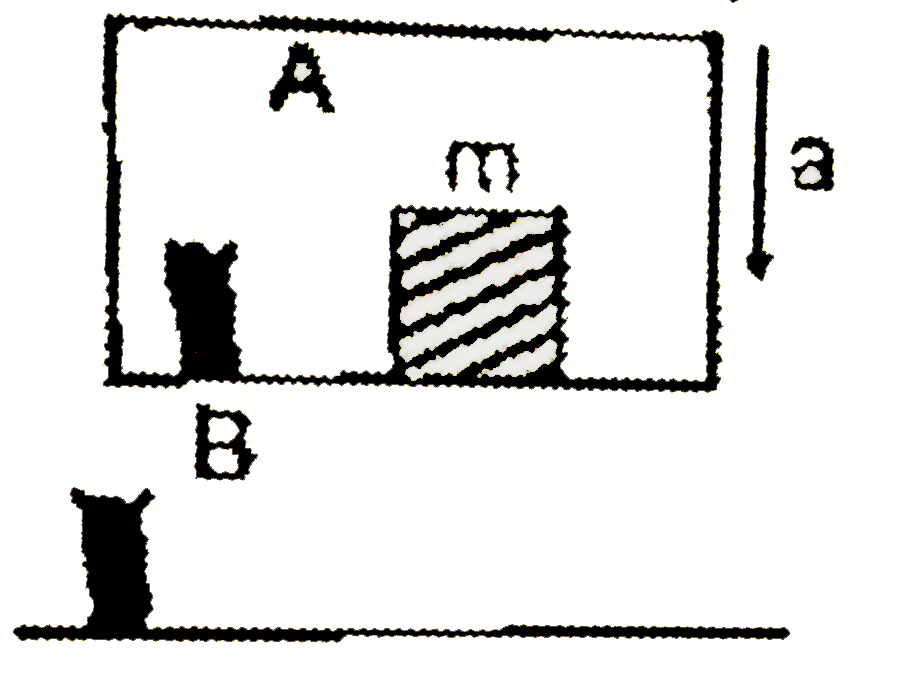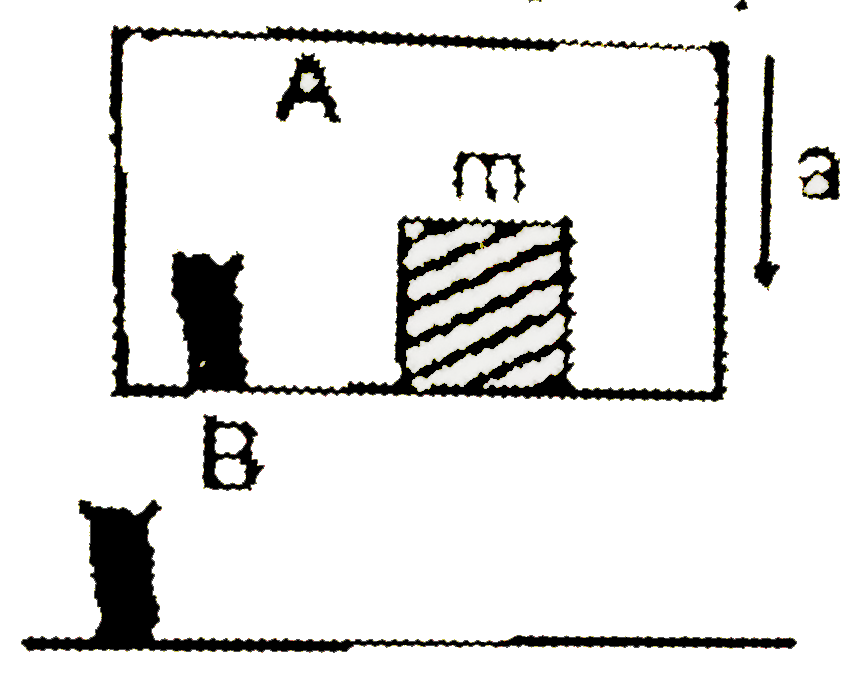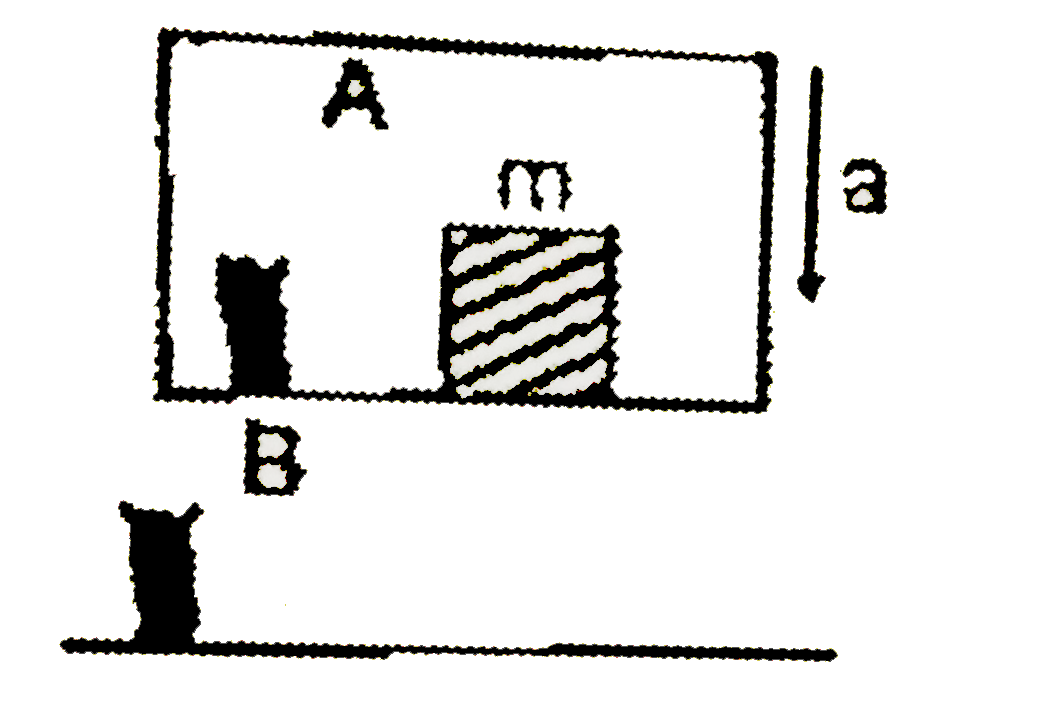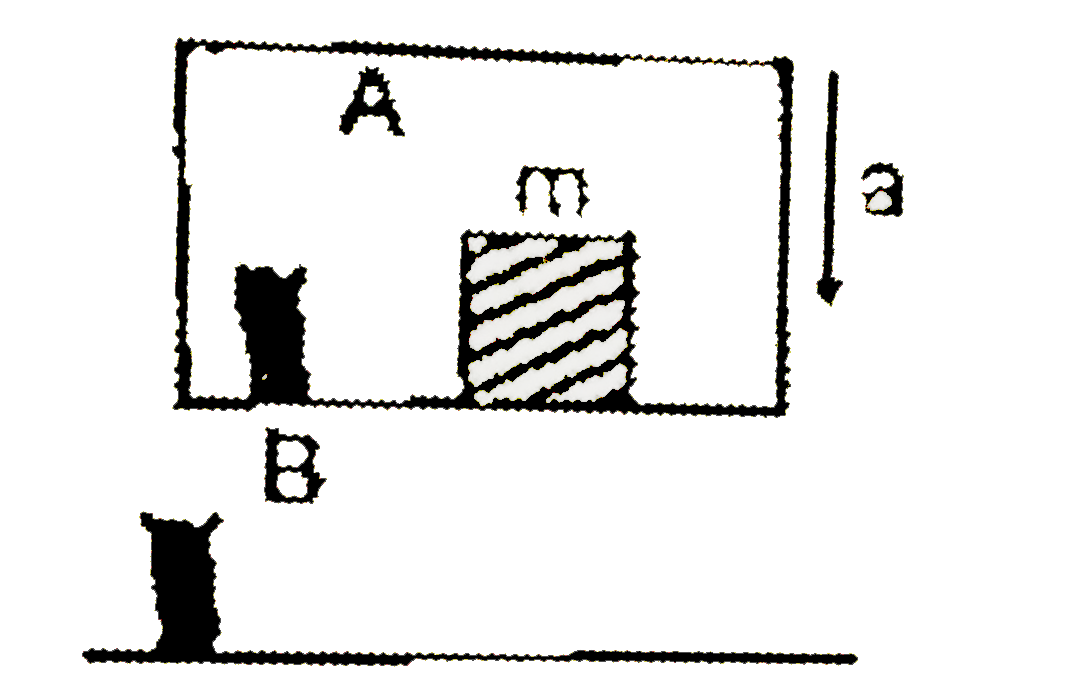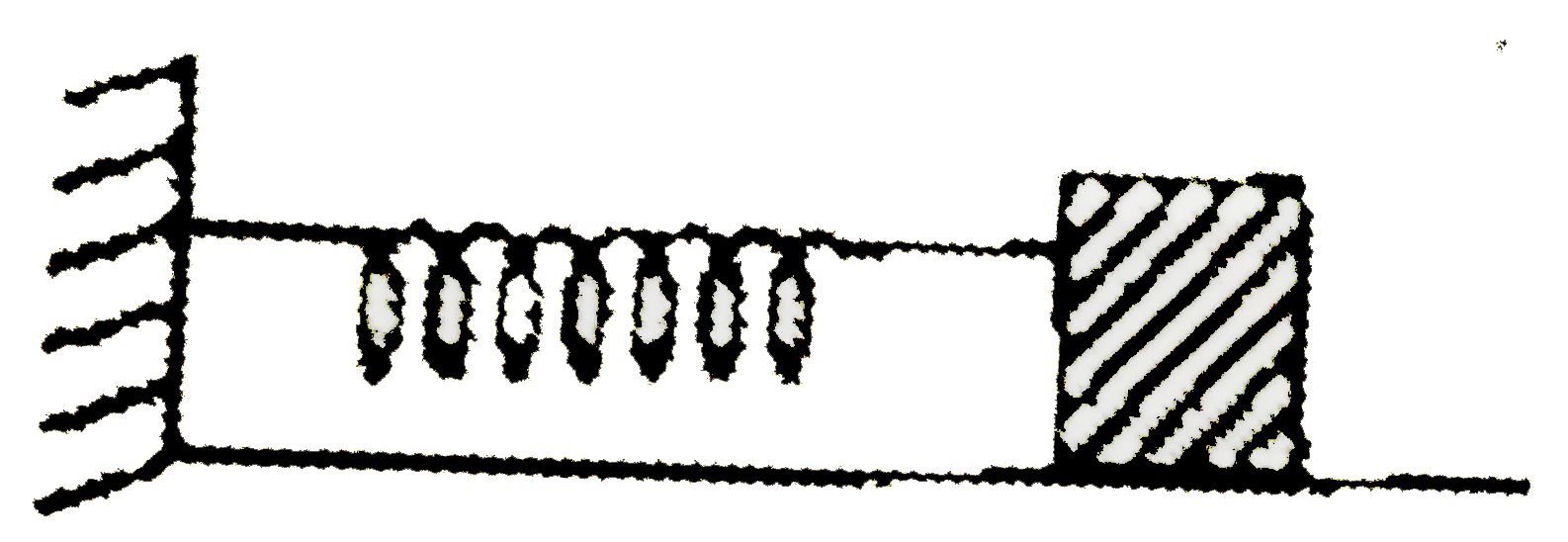Level 3 from SHREE BALAJI PHYSICS Chapter 6 WORK AND ENERGY for Class 11
| Class 11 | PHYSICS |
| Chapter | WORK AND ENERGY |
| SHREE BALAJI PHYSICS | Level 3 |
| Medium | English |
| Academic Year | 2023-2024 |
Question 1
In the shown figure, the spring and string is ideal. The spring the stiffness of 100N/m and m=1kg friction exists between mass 2m and surface with coefficient μ=0.8. The system is released with spring from its relaxed position. Based on above data, answer the following question: (take g=10m/s2)
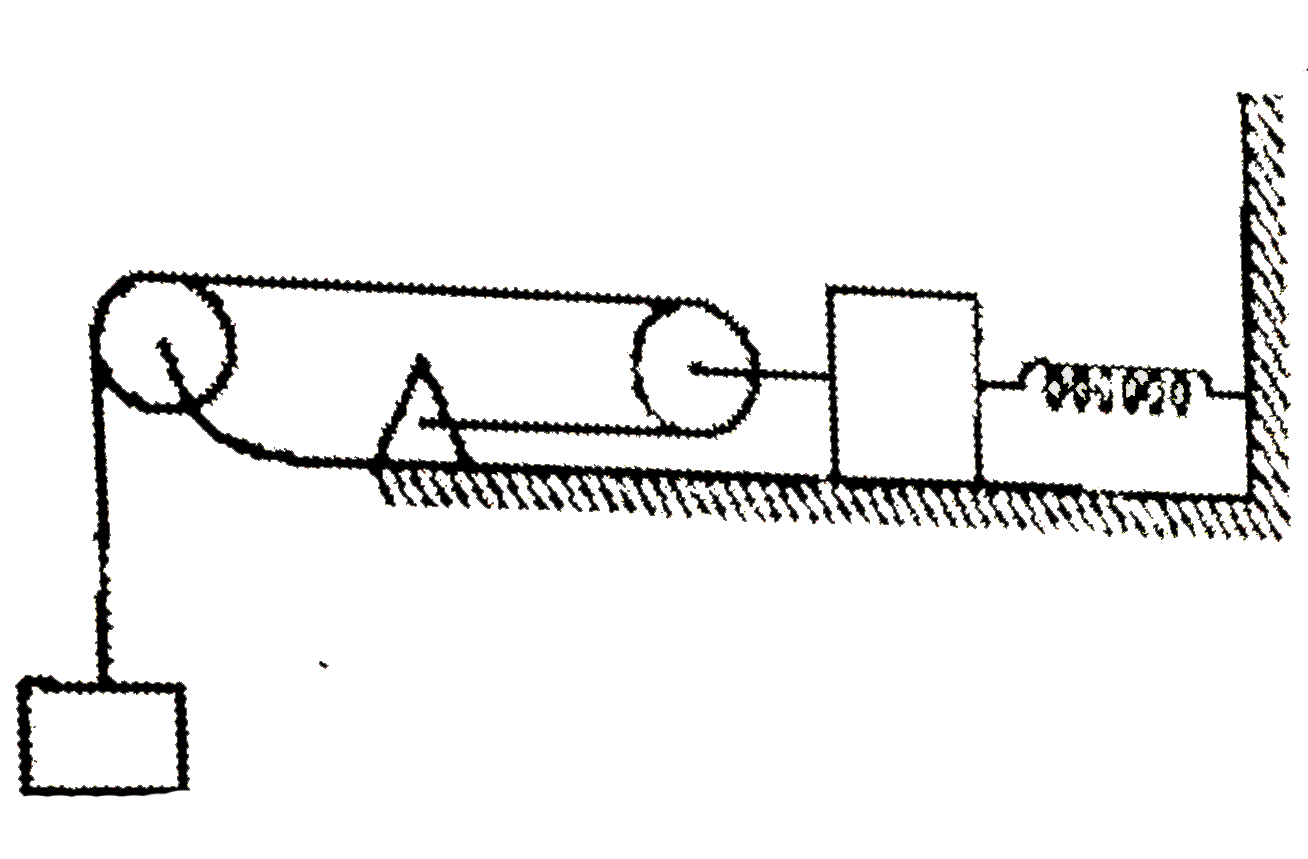
Maximum extension in spring is :View SolutionQuestion 2
In the shown figure, the spring and string is ideal. The spring the stiffness of 100N/m and m=1kg friction exists between mass 2m and surface with coefficient μ=0.8. The system is released with spring from its relaxed position. Based on above data, answer the following question: (take g=10m/s2)
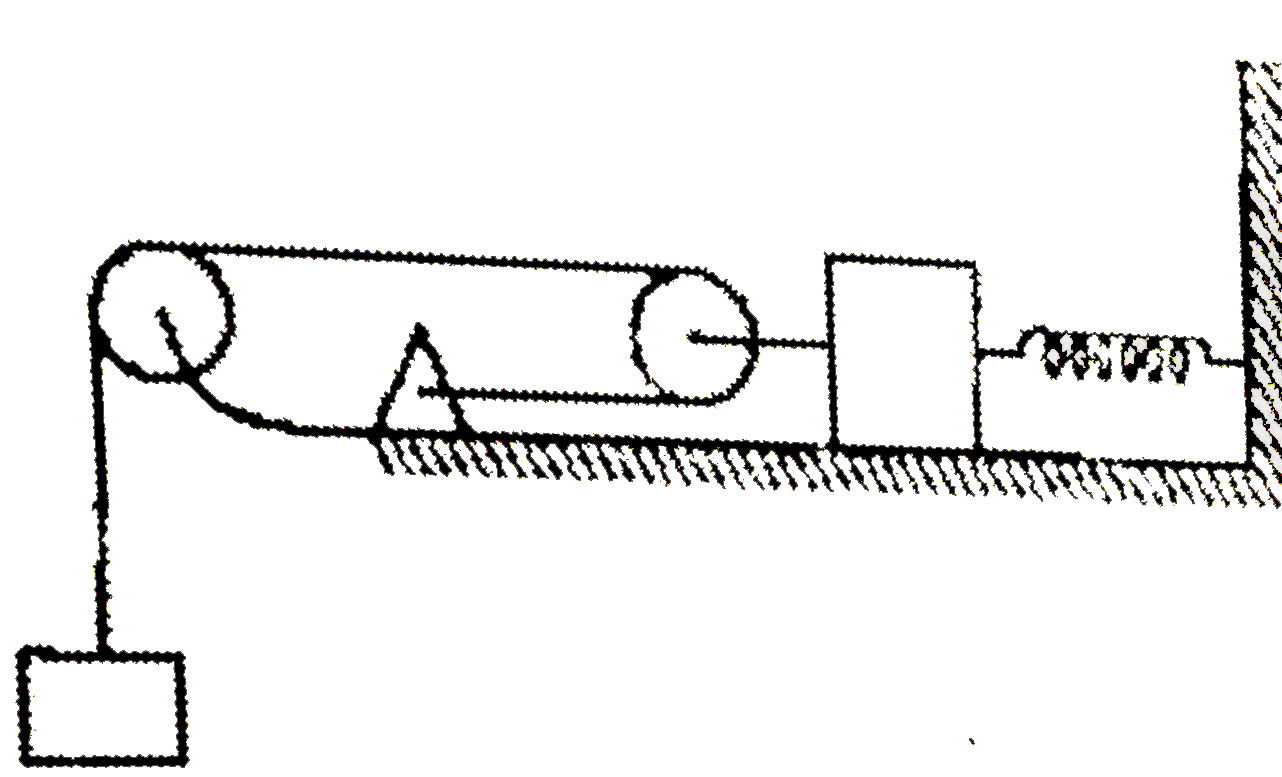
Magnitude of work done by gravity during the motion of system is :View SolutionQuestion 3
In the shown figure, the spring and string is ideal. The spring the stiffness of 100N/m and m=1kg friction exists between mass 2m and surface with coefficient μ=0.8. The system is released with spring from its relaxed position. Based on above data, answer the following question: (take g=10m/s2)
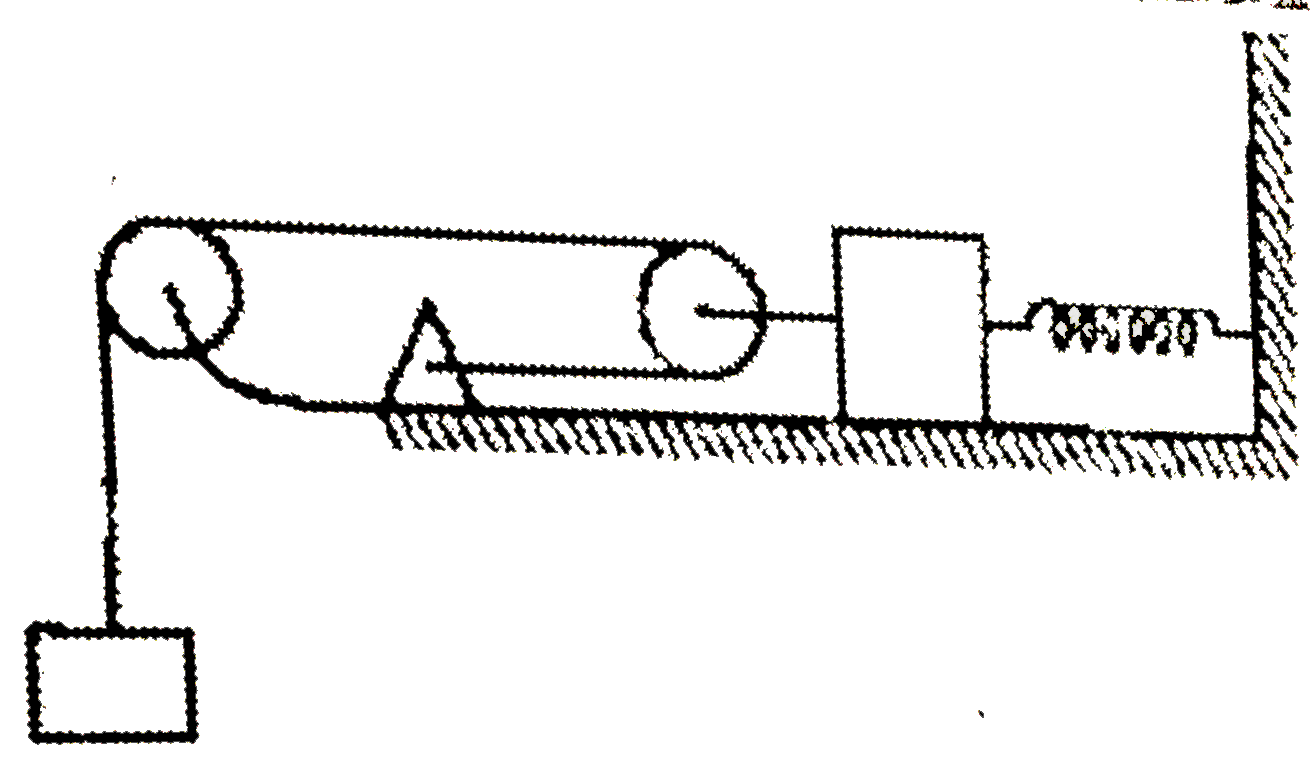
Magnitude of net work done by spring after the system is released for motion is:View SolutionQuestion 4
In the shown figure, the spring and string is ideal. The spring the stiffness of 100N/m and m=1kg friction exists between mass 2m and surface with coefficient μ=0.8. The system is released with spring from its relaxed position. Based on above data, answer the following question: (take g=10m/s2)

Frictional force acting on the mass 2m when it finally comes to rest is:View SolutionQuestion 5
In the shown figure, the spring and string is ideal. The spring the stiffness of 100N/m and m=1kg friction exists between mass 2m and surface with coefficient μ=0.8. The system is released with spring from its relaxed position. Based on above data, answer the following question: (take g=10m/s2)
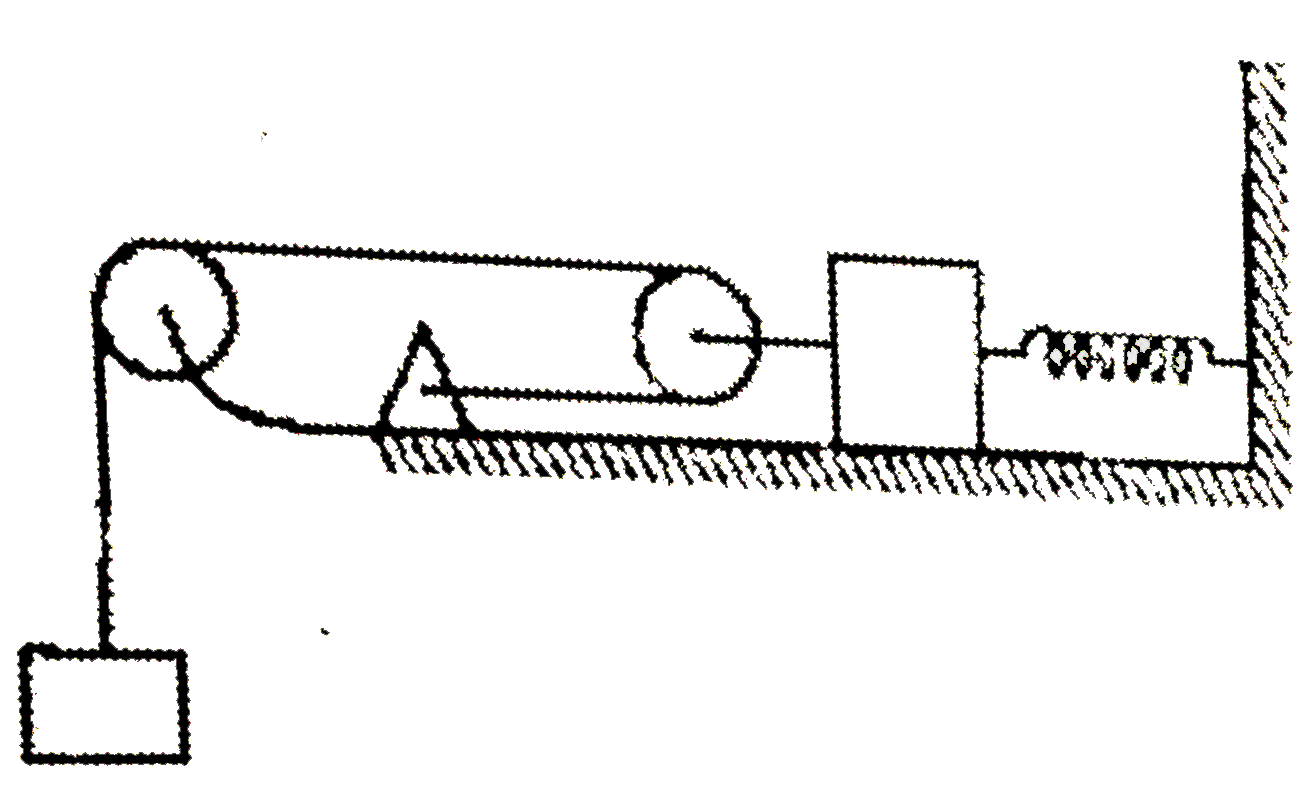
After what displacement of mass 2m, its velocity becomes maximum ?View SolutionQuestion 14
A block of mass m moving with a velocity v0 on a smooth horizontal surface strikes and compresses a spring ofstiffuess k till mass coines to rest as shown in the figure. This phenomenon is observed by two observers :
(a) Standing on the horizontal surface
(b) standing on the block
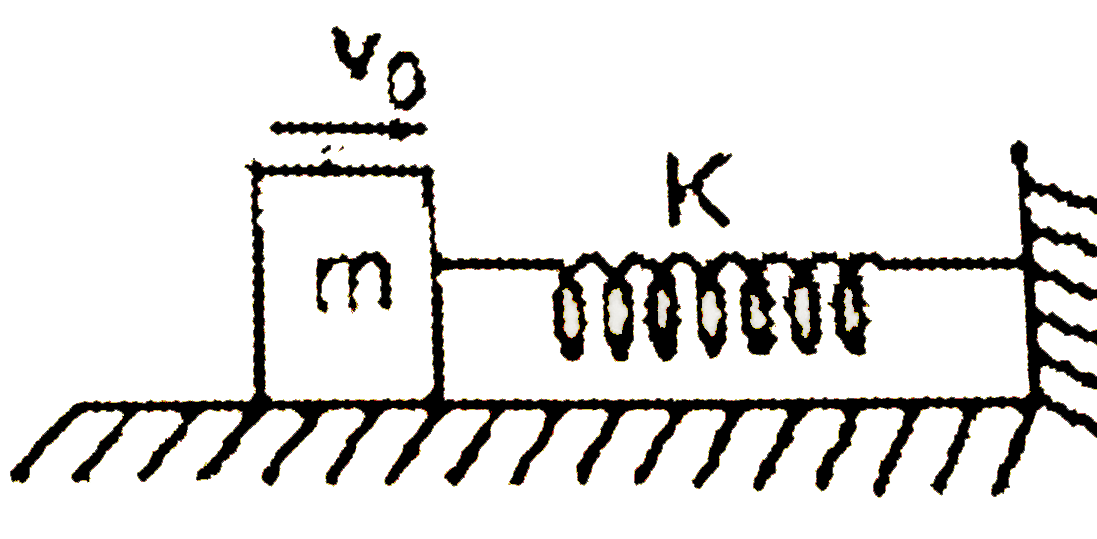
To an observer A the work done by spring force is:View SolutionQuestion 15
A block of mass m moving with a velocity v0 on a smooth horizontal surface strikes and compresses a spring ofstiffuess k till mass coines to rest as shown in the figure. This phenomenon is observed by two observers :
(a) Standing on the horizontal surface
(b) standing on the block
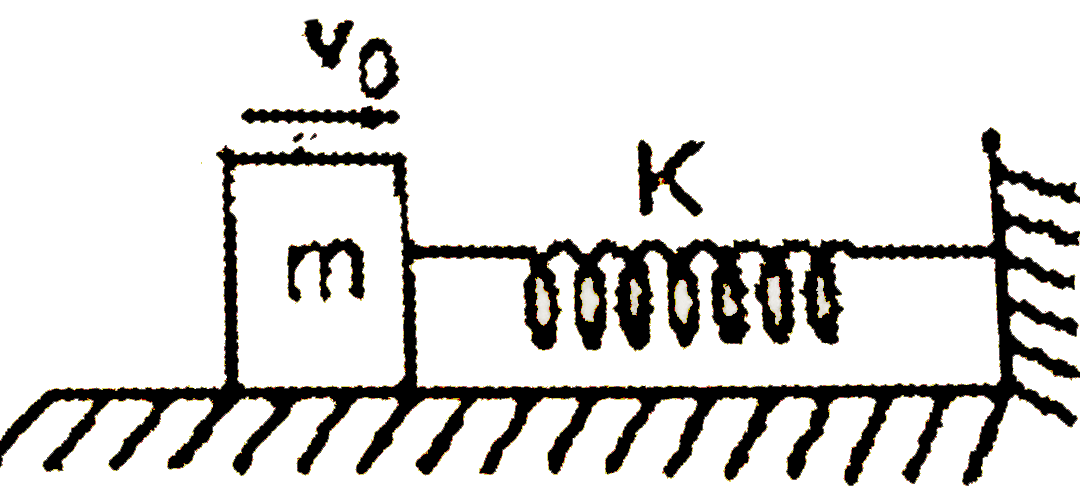
To an observer A, the work done by the normal reaction N between the block and the spring on the block is :View SolutionQuestion 16
A block of mass m moving with a velocity v0 on a smooth horizontal surface strikes and compresses a spring ofstiffuess k till mass coines to rest as shown in the figure. This phenomenon is observed by two observers :
(a) Standing on the horizontal surface
(b) standing on the block

To an observer A, the net work done on the block is:View SolutionQuestion 17
A block of mass m moving with a velocity v0 on a smooth horizontal surface strikes and compresses a spring ofstiffuess k till mass coines to rest as shown in the figure. This phenomenon is observed by two observers :
(a) Standing on the horizontal surface
(b) standing on the block
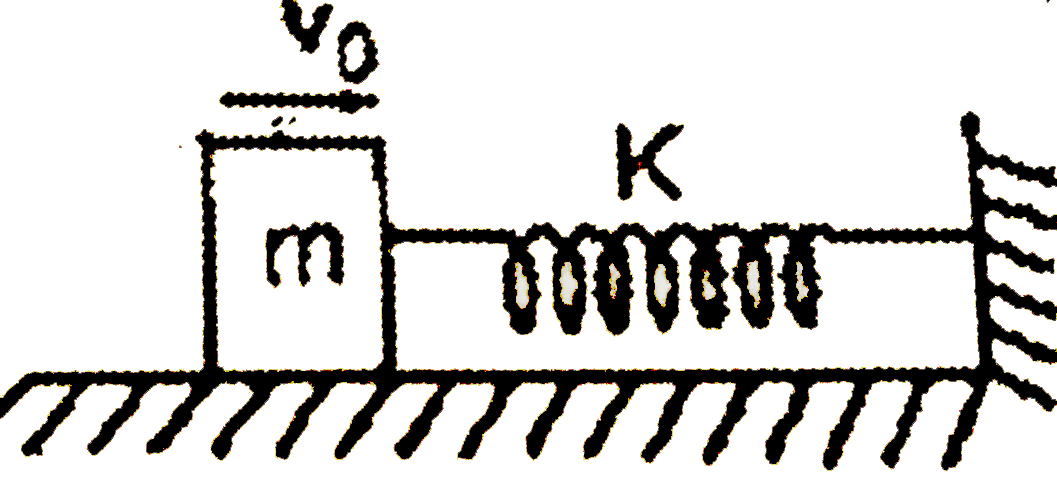
Accoording to the observer A :View SolutionQuestion 18
A block of mass m moving with a velocity v0 on a smooth horizontal surface strikes and compresses a spring ofstiffuess k till mass coines to rest as shown in the figure. This phenomenon is observed by two observers :
(a) Standing on the horizontal surface
(b) standing on the block
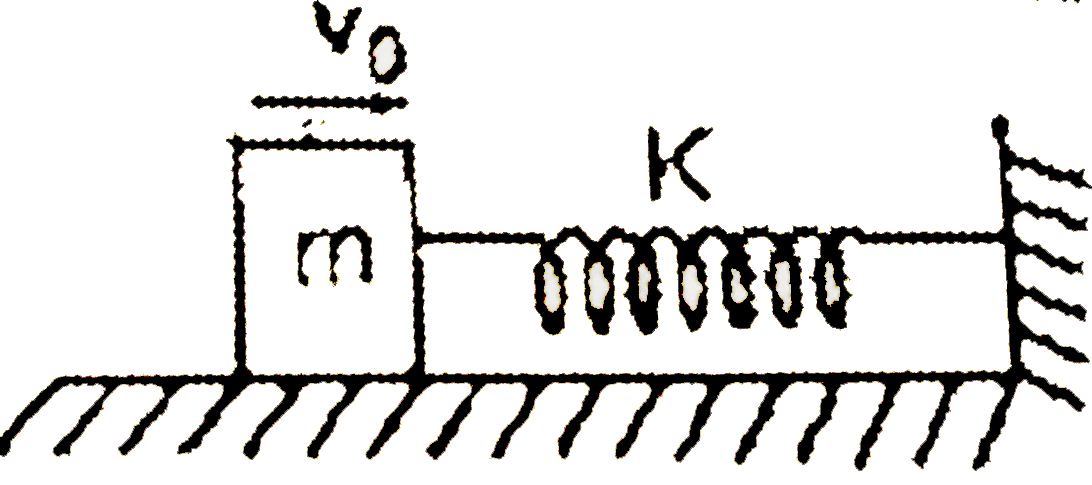
To an observer B, when the block is compressing the spring : View SolutionQuestion 19
A block of mass m moving with a velocity v0 on a smooth horizontal surface strikes and compresses a spring ofstiffuess k till mass coines to rest as shown in the figure. This phenomenon is observed by two observers :
(a) Standing on the horizontal surface
(b) standing on the block
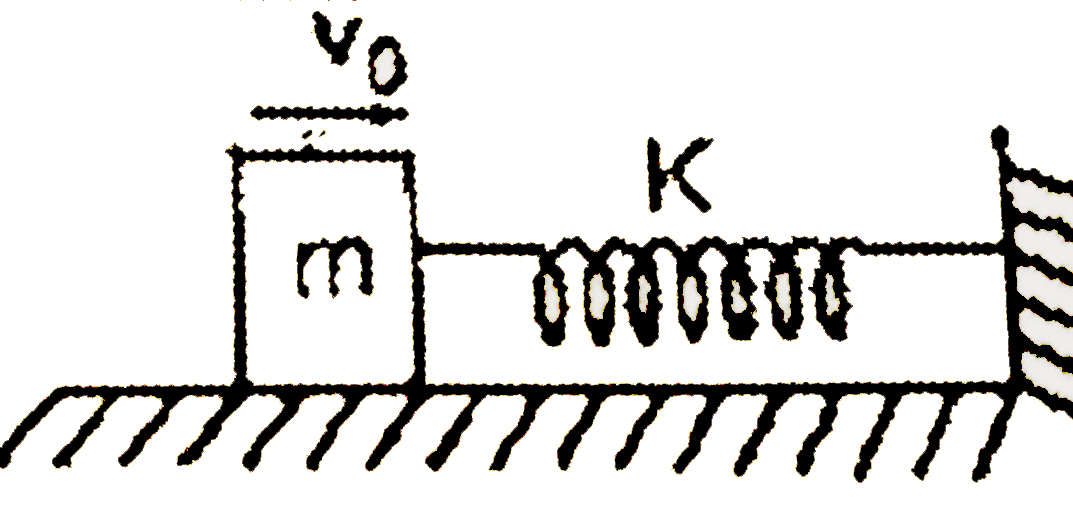
According to observer B, the potential energy of the spring increases :View SolutionQuestion 26
This diagram depicts a block sliding along a, frictionless ramp in vertical plane. The eightl numbered arrows in the diagram represent directions, to be referred to when answering the questions.
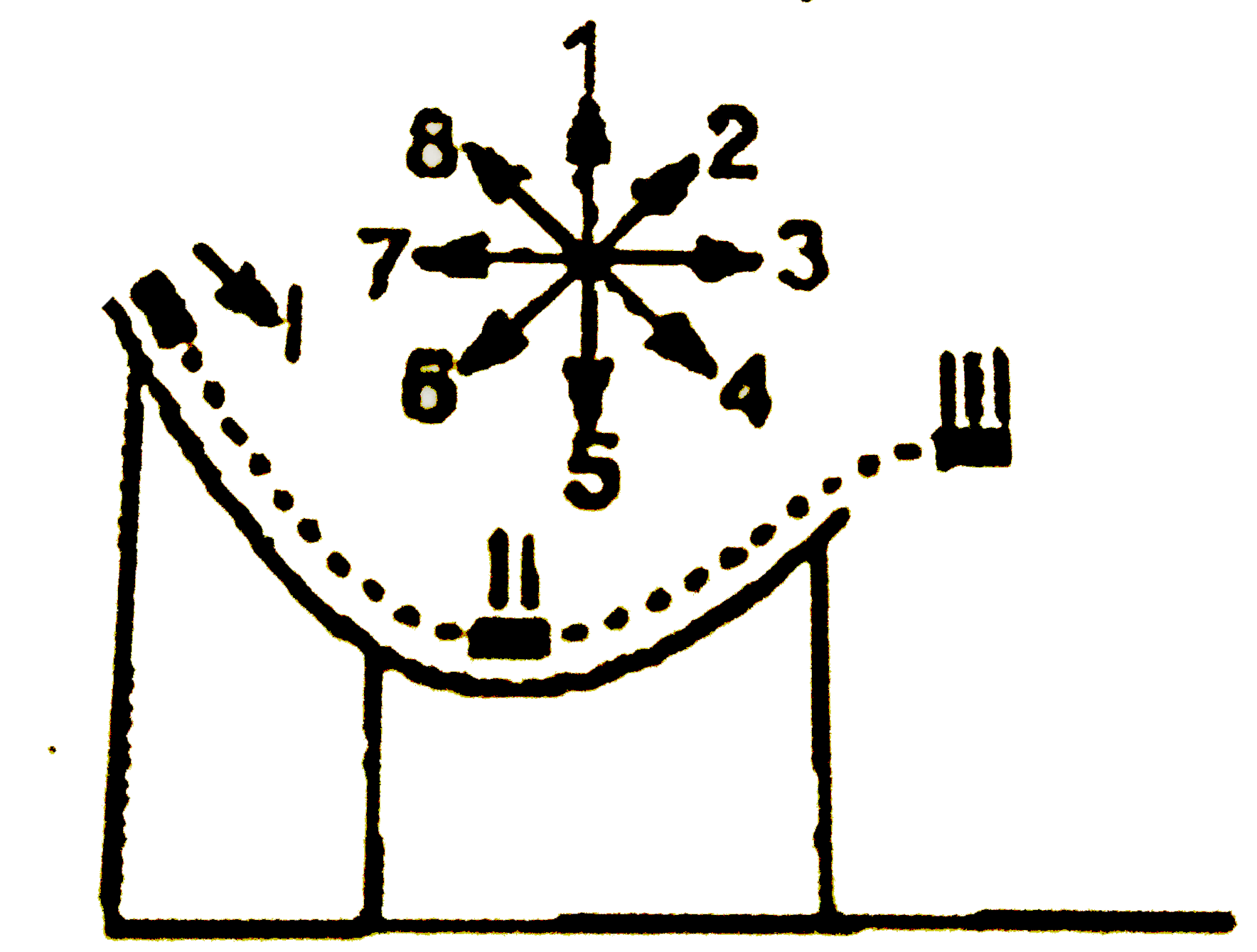
The direction of the acceleration of the block, when in position I, is best represented by which of the arrows in the diagram ?View SolutionQuestion 27
figure depicts a block sliding along a frictionless ramp in vertical plane Eight numbered arrows in the diagram repreesent direction to be referred to when answering the questions
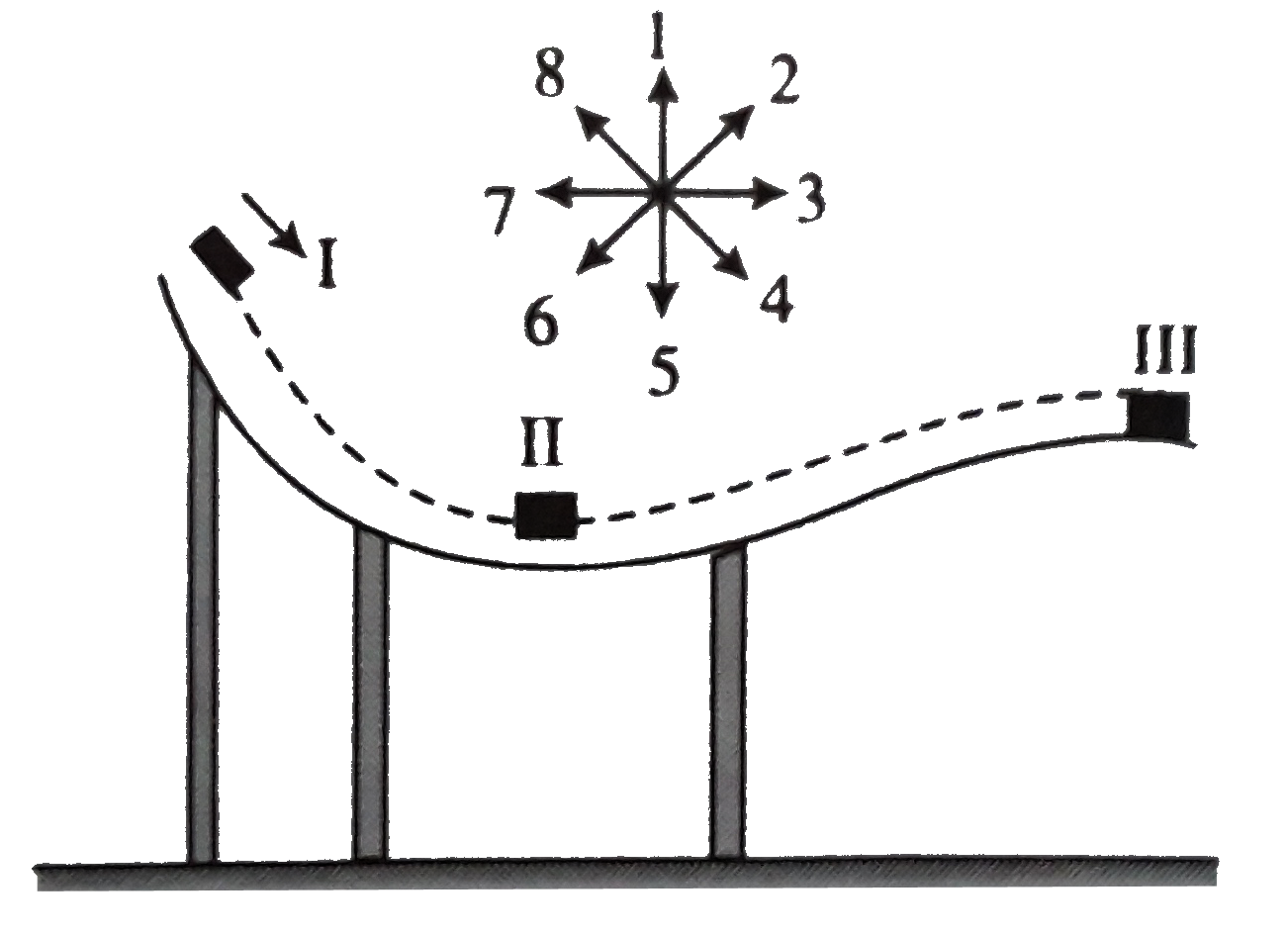
Position - i : Starts sliding on curve path
Position - ii : Lowest position of the curve path
Position - iii : Just outside of the curve path
The direction of the acceleration of the blocks when in position ii is best represented by which of the arrows in the diagram?View SolutionQuestion 28
This diagram depicts a block sliding along a, frictionless ramp in vertical plane. The eightl numbered arrows in the diagram represent directions, to be referred to when answering the questions.
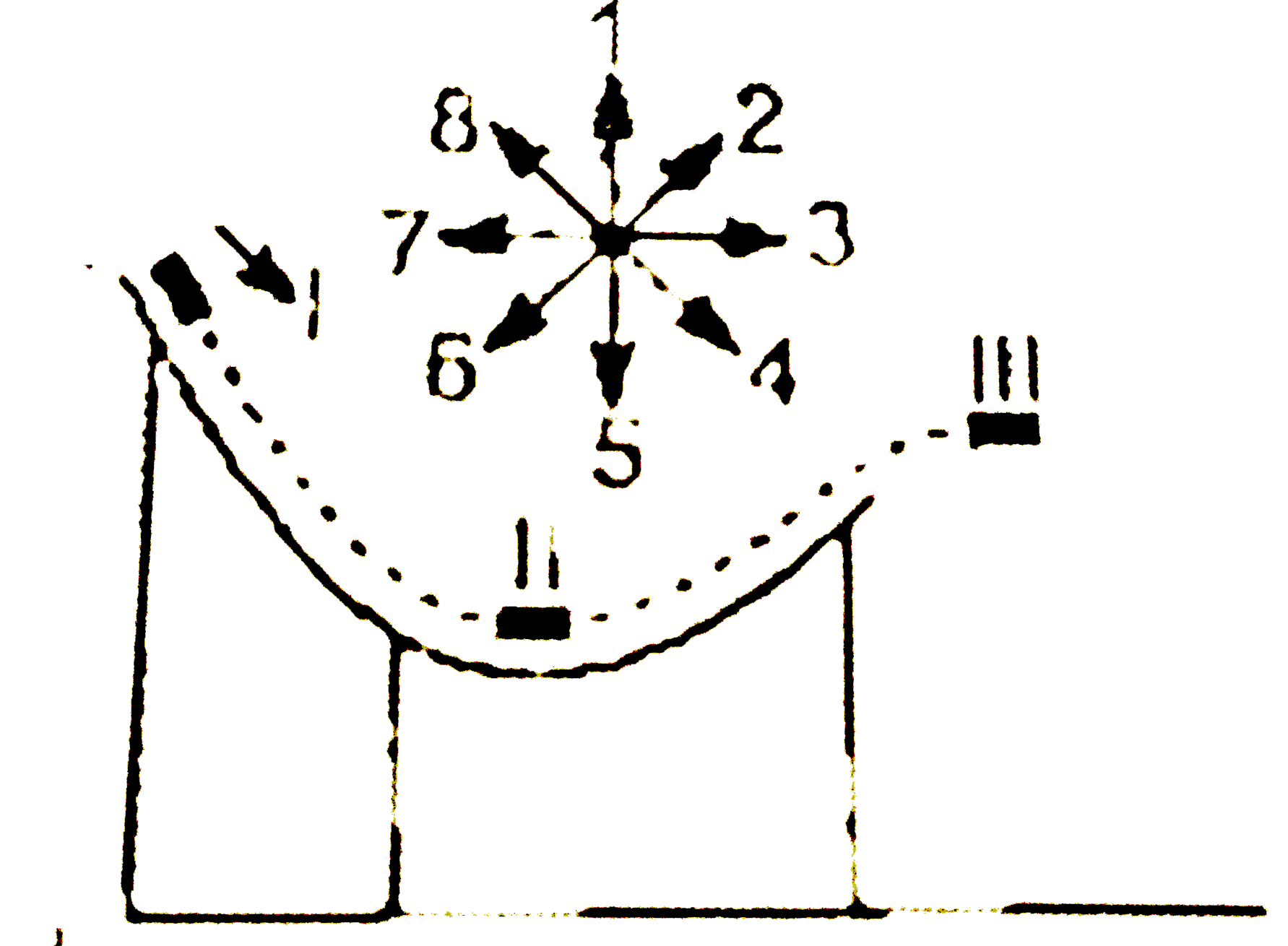
The direction of the acceleration of the block (after leaving the ramp) at position III is best represented by which of the arrows in the diagram ? View SolutionQuestion 29
The kinetic energy of any body depends on the frame of reference of the observer. The kinetic energy is given by 1/2mv2rel. Similarly the displacement of the object from different frames of reference will be: different. But the forces acting on the body remain unchanged. So work done by the forces as seen from: different frames will be different. But work energy! theorem will still be hold in every inertial reference' frame.
For example, if a block of mass 2kg is moving with, velocity of 1m/s towards east on a rough surface, its KE=12×2×12=1J
If it comes to rest, its KE=0
work done by friction =Kf−ki=−1J
If we observe it form a frame 2 moving with 1m/s toward east, its initial velocity will appear to be 1−1=0
Initial KE=12×2×02=0
Final velocity =0−1=−1
Final KE=12×2×(−1)2=1J
⇒ Work done by friction =1−0=1J
According to passage: View SolutionQuestion 30
The kinetic energy of any body depends on the frame of reference of the observer. The kinetic energy is given by 1/2mv2rel. Similarly the displacement of the object from different frames of reference will be: different. But the forces acting on the body remain unchanged. So work done by the forces as seen from: different frames will be different. But work energy! theorem will still be hold in every inertial reference' frame.
For example, if a block of mass 2kg is moving with, velocity of 1m/s towards east on a rough surface, its KE=12×2×12=1J
If it comes to rest, its KE=0
work done by friction =Kf−ki=−1J
If we observe it form a frame 2 moving with 1m/s toward east, its initial velocity will appear to be 1−1=0
Initial KE=12×2×02=0
Final velocity =0−1=−1
Final KE=12×2×(−1)2=1J
⇒ Work done by friction =1−0=1J
What should be the velocity of an observer so that he will report the work done by friction on the block to be 0:View SolutionQuestion 31
The kinetic energy of any body depends on the frame of reference of the observer. The kinetic energy is given by 1/2mv2rel. Similarly the displacement of the object from different frames of reference will be: different. But the forces acting on the body remain unchanged. So work done by the forces as seen from: different frames will be different. But work energy! theorem will still be hold in every inertial reference' frame.
For example, if a block of mass 2kg is moving with, velocity of 1m/s towards east on a rough surface, its KE=12×2×12=1J
If it comes to rest, its KE=0
work done by friction =Kf−ki=−1J
If we observe it form a frame 2 moving with 1m/s toward east, its initial velocity will appear to be 1−1=0
Initial KE=12×2×02=0
Final velocity =0−1=−1
Final KE=12×2×(−1)2=1J
⇒ Work done by friction =1−0=1J
Choose correct statement :View SolutionQuestion 32
The potential energy at a point, relative to the reference point is always defined as the negative of work done by the force as the object moves from the reference point to the point considered. The value of potential energy at the reference point itself can be set equal to zero because we are always concerned only with differences of potential energy between two points and the associated change of kinetic energy. A particles A is fixed at origin of a fixed coordinate system. A particle B which is free to move experiences an force →F=(−2ar3+βr2)ˆr due to particle A where ˆr is the position vector of particle B relative to A. It is given that the force is conservative in nature and _potential energy at infinity is zero. If B has to be removed from the influence of A, energy has to be supplied for such a process. The ionization energy E 0 is work that has to be done by an external agent to move the particle from a distance r0 to infinity slowly. Here r0 is the equilibrium position of the particle
What is potential energy function of particle as function of r.View SolutionQuestion 33
The potential energy at a point, relative to the reference point is always defined as the negative of work done by the force as the object moves from the reference point to the point considered. The value of potential energy at the reference point itself can be set equal to zero because we are always concerned only with differences of potential energy between two points and the associated change of kinetic energy. A particles A is fixed at origin of a fixed coordinate system. A particle B which is free to move experiences an force →F=(−2ar3+βr2)ˆr due to particle A where ˆr is the position vector of particle B relative to A. It is given that the force is conservative in nature and _potential energy at infinity is zero. If B has to be removed from the influence of A, energy has to be supplied for such a process. The ionization energy E 0 is work that has to be done by an external agent to move the particle from a distance r0 to infinity slowly. Here r0 is the equilibrium position of the particle
Find the ionization energy E0 of the particle BView SolutionQuestion 34
The potential energy at a point, relative to the reference point is always defined as the negative of work done by the force as the object moves from the reference point to the point considered. The value of potential energy at the reference point itself can be set equal to zero because we are always concerned only with differences of potential energy between two points and the associated change of kinetic energy. A particles A is fixed at origin of a fixed coordinate system. A particle B which is free to move experiences an force →F=(−2ar3+βr2)ˆr due to particle A where ˆr is the position vector of particle B relative to A. It is given that the force is conservative in nature and _potential energy at infinity is zero. If B has to be removed from the influence of A, energy has to be supplied for such a process. The ionization energy E 0 is work that has to be done by an external agent to move the particle from a distance r0 to infinity slowly. Here r0 is the equilibrium position of the particle
If particle B is transferred slowly from point P1(√2r0,√2r0) to point P2(r0√2,r0√2) in the xy-plane by an external agent, calculate work required to be done by it in the process: View Solution
